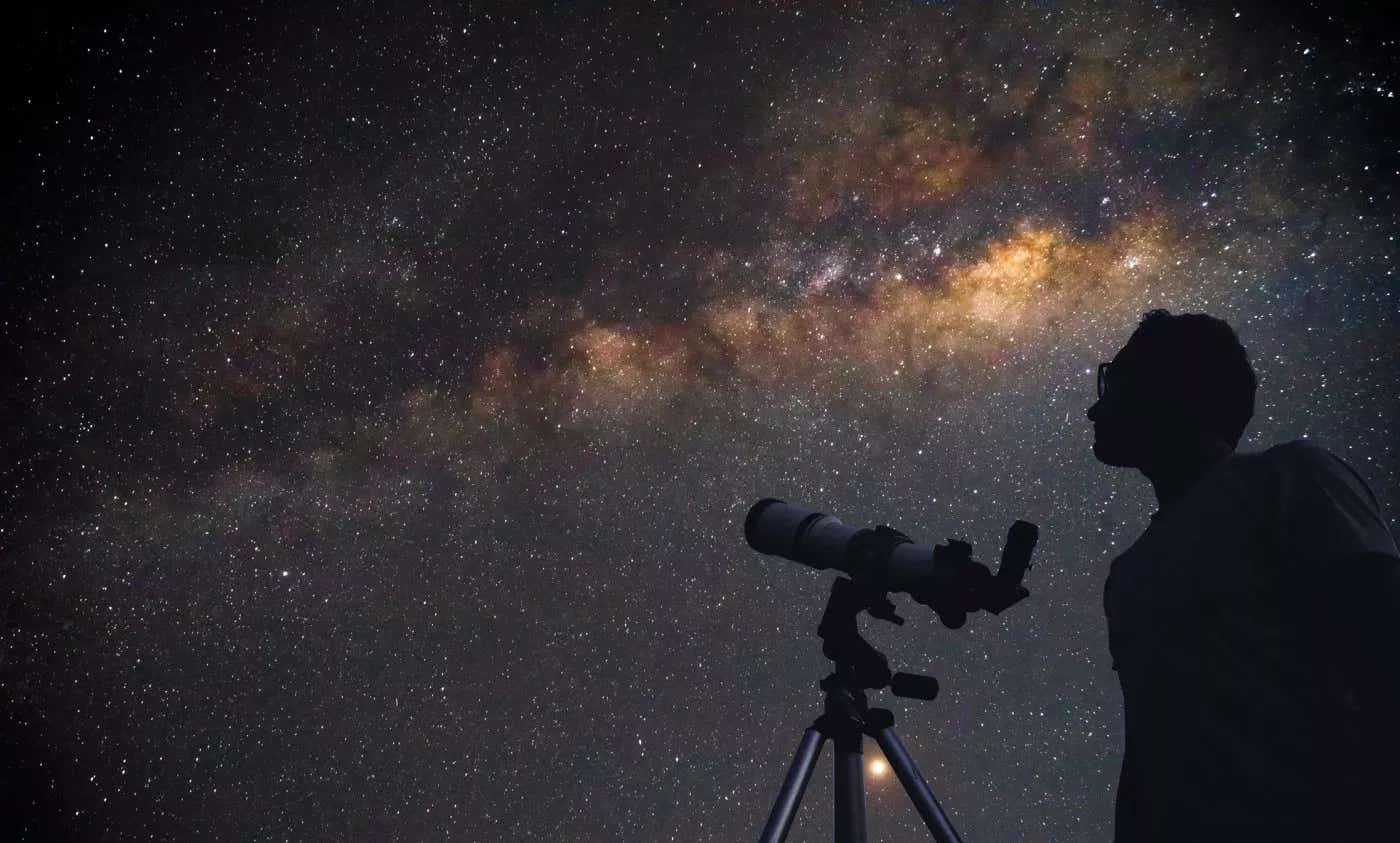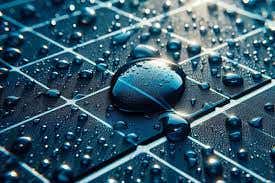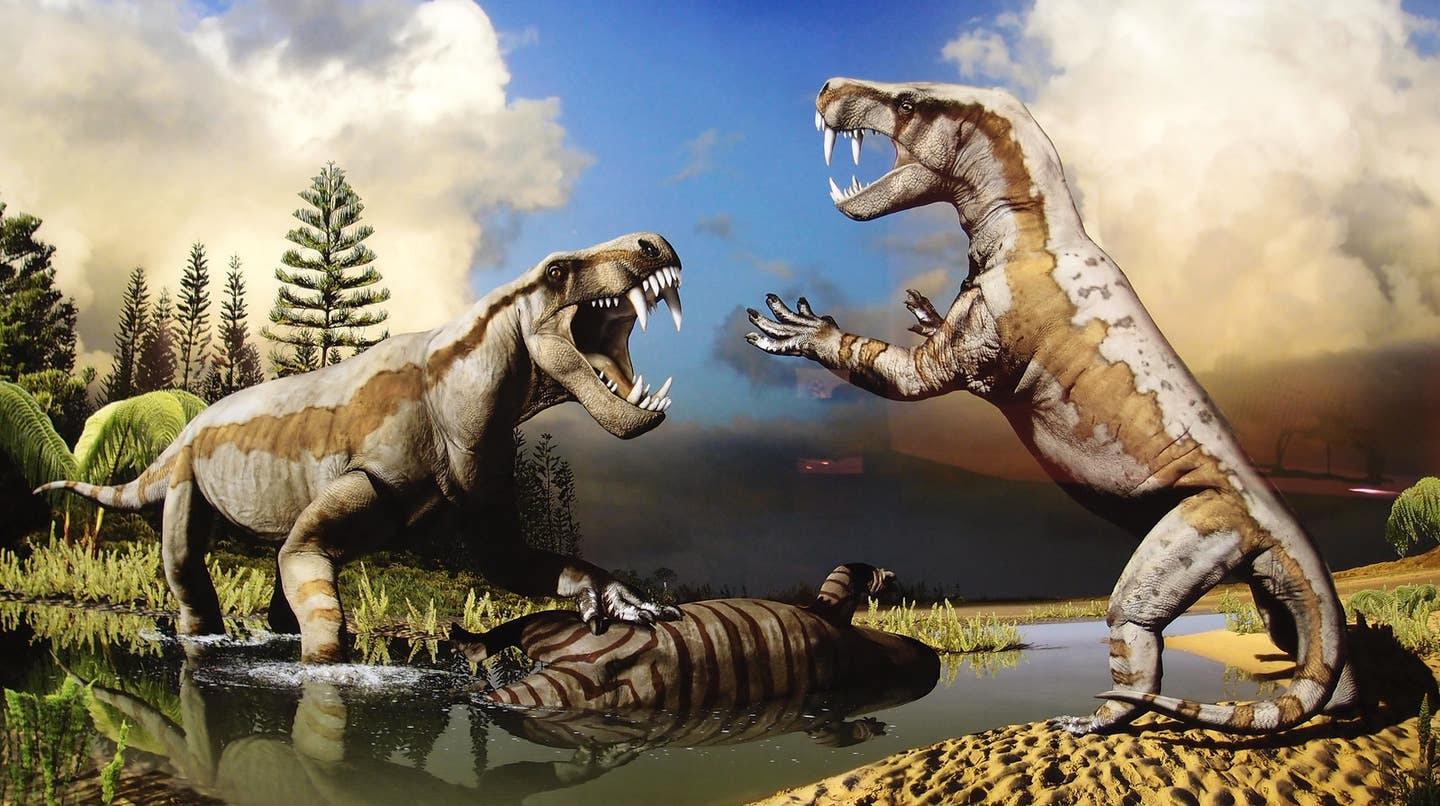Scientists propose simple new way to spot alien life in the universe
As researchers continue the search for extraterrestrial life, they’re facing a major challenge: alien life might look nothing like life on Earth.

Scientists propose energy-based patterns as a new way to detect alien life beyond Earth. (CREDIT: m-gucci/Getty)
Are living beings hiding on distant planets, waiting to be found? That question has captured the minds of scientists and dreamers alike for generations. But as researchers continue the search for extraterrestrial life, they’re facing a major challenge: alien life might look nothing like life on Earth. And if that's the case, how would anyone even know what to look for?
Mikhail Tikhonov, a physicist at Washington University in St. Louis, and Akshit Goyal from the International Centre for Theoretical Science in India, believe the answer lies not in familiar shapes or substances, but in patterns of energy. Their recent paper in Nature Communications introduces a new idea that could help detect alien life—even if it’s made of completely unknown materials.
The Limits of Looking for What We Know
Many current efforts to detect life in space focus on molecules we associate with Earth’s biology. These include organic compounds and gases like oxygen or methane, which can be byproducts of life. But these substances aren’t exclusive to living things. They can also appear through non-living, or abiotic, processes.
That’s a big problem. If scientists rely only on these familiar molecules, they might miss life that evolved in ways we can't imagine. “There is no reason to believe that an alien life form would have to be using the same molecules we do,” Tikhonov said.
In fact, some researchers believe life in other parts of the universe might not even be carbon-based. So how can life be detected if no one knows what it looks like?
Tikhonov and Goyal suggest that focusing on chemistry alone may be too limiting. They argue it’s time to shift the search toward something more universal: energy use.
What All Life Must Do
There’s no single definition of life that fits every possible form it might take. But scientists generally agree that all living things do two things: they consume and transform energy, and they reproduce. Those two traits—metabolism and self-replication—are the foundation of life as we understand it.
Related Stories
But living organisms don’t exist in isolation. Life naturally gives rise to ecosystems where many different species interact and compete for limited resources. Even in lab experiments designed to limit complexity, single organisms often develop ecological interactions. There’s only one known case of a truly isolated life form on Earth—and even it shows signs of having once belonged to a larger community.
Tikhonov and Goyal argue that this competition between organisms creates a reliable and measurable pattern. It’s not about what life is made of, but how life behaves in a shared environment. And that pattern, they say, could be used as a new kind of biosignature.
A New Way to Recognize Alien Life
Their idea centers on how organisms process chemical compounds based on energy. On Earth, living things prefer compounds that store a lot of energy—such as glucose. These high-energy substances are broken down into lower-energy products like carbon dioxide.
This behavior leads to what Tikhonov calls energy-ordered stratification. In simpler terms, the environment becomes layered, with compounds arranged in order of their energy content. The more energy a molecule holds, the more likely it is to be used first. That’s a basic rule of survival for all living things that compete for resources.
“This pattern doesn’t depend on what the life forms look like,” Tikhonov explained. “As long as there is self-replication and ecological competition, the same kind of energy-driven layering should appear.”
What makes this pattern special is that it doesn’t happen in non-living systems. In chemistry, the energy a compound stores and the rate at which it reacts are determined by different factors. They aren’t naturally connected. So in a lifeless system, there’s no reason why compounds would arrange themselves by energy content.
But when life is present, energy becomes a priority. This causes the formation of layered chemical environments that are shaped by living behavior. Tikhonov and Goyal believe that spotting such a structure—especially in rock samples from other planets—could be strong evidence that life was once there.
A Truly Agnostic Biosignature
This approach stands out because it requires fewer assumptions about what alien life is made of or how it works. Other suggestions for "agnostic biosignatures"—signals that don’t depend on Earth-like biology—include looking for features like homochirality (molecules with a consistent handedness) or polyelectrolytes (charged polymers). But those still rely on assumptions about how life might store information or build itself.
Energy-ordered stratification, in contrast, comes directly from the need to survive. Organisms that don’t prioritize high-energy compounds would lose out in a competitive environment. That means this pattern could emerge in any kind of life system that follows the basic rules of evolution.
Even if a being were made of unknown materials, or lived in a way that defies today’s science, it would still need to capture energy efficiently. That need could leave behind a trace—a fingerprint of life in how chemicals are layered over space and time.
To support their theory, Tikhonov and Goyal used a simple model of life. Their simulation didn’t assume any particular biology or chemistry. It only included self-replicating organisms competing for resources. Yet even this bare-bones setup produced energy-based stratification.
This shows that the pattern can appear from just two ingredients: the drive to replicate and the need to compete. No special molecules are required. That’s what makes the signal agnostic—it doesn’t depend on knowing anything about the alien environment.
What Could Alien Life Actually Look Like?
It’s tempting to picture aliens as green-skinned creatures or Earth-like microbes. Some scientists think that even on distant planets, life might evolve to look similar to ours. Basic physics and chemistry could push evolution in the same direction everywhere.
But Tikhonov urges people to think beyond what’s familiar. “What if on some distant planet, life operates on an entirely different scale?” he asked. “One could imagine a mile-long being floating in some distant atmosphere.”
His job as a theorist is to explore the limits of what life could be. That’s why he finds energy-based biosignatures so exciting—they let scientists look beyond what they already know. Instead of hunting for copies of Earth life, researchers can look for patterns shaped by universal rules.
This fresh way of thinking could change the future of space exploration. Missions to Mars, Europa, Enceladus, or even exoplanets beyond our solar system might one day use energy-sensing instruments to look for this kind of chemical layering. If such patterns are found, it would be a powerful sign that we’re not alone after all.
Note: The article above provided above by The Brighter Side of News.
Like these kind of feel good stories? Get The Brighter Side of News' newsletter.
Joshua Shavit
Science & Technology Writer | AI and Robotics Reporter
Joshua Shavit is a Los Angeles-based science and technology writer with a passion for exploring the breakthroughs shaping the future. As a contributor to The Brighter Side of News, he focuses on positive and transformative advancements in AI, technology, physics, engineering, robotics and space science. Joshua is currently working towards a Bachelor of Science in Business Administration at the University of California, Berkeley. He combines his academic background with a talent for storytelling, making complex scientific discoveries engaging and accessible. His work highlights the innovators behind the ideas, bringing readers closer to the people driving progress.



